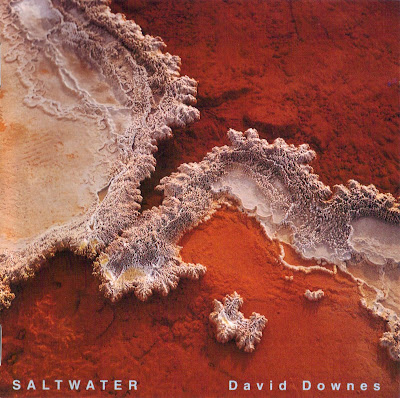Finally!
Been waiting to hear this one for ages, and it has truly been worth the wait.
Damn! It's that good!
Recorded between 1972 and 1979, this record documents the development of one of New Zealand's most important electroacoustic composers. From tape experiments to pure computer synthesis, and from electroacoustic sympathy back to tape experiments.
The title track, 'Soundweb,' in all its glory is like the big, sophisticated brother of
Brent Carlsson's 'Gaga Who?', with its stereo-separated electric bumblebees blowing kinda blues, and laughing tin fairground clowns. The liner notes say that visiting trombonist James Fulkerson 'sparked off a wave of creativity wherever he went,' and it's fair to say this collaboration is inspiring. Fulkerson anticipates and reacts to treated tapes and loops of his own trombone: booming ring-modulated Rileyisms dropping back to lone Frippertronicised blerts. The electronics for this piece were recorded at the Recording and Electronic Music Studios at the University of East Anglia, where fellow Kiwi Denis Smalley was lecturer in music and later Director of the Electroacoustic Music Studio. More on him in a later post.
'Poi' is the only purely electronic work in this collection, and was created using early digital synthesis technology at the Massachusetts Institute of Technology Experimental Music Studio. It is also documented on his CD Manu collection,
'Fleeting Images'.
'Colder Far than Snow' was recorded at the University of Toronto Electronic Music Studio, where Rimmer -- like Lilburn -- studied under Gustav Ciamaga. This considered work makes use of very spare early-electronic tones and textures, with mic'ed, amplified, and treated found object sounds.
'Compositions' '6' and '9' (for 'Piano and Electronic Sounds' and 'Soprano and Electronic Sounds' respectively) are amongst the most balanced of Rimmer's 'Compositions' series. Both electronic and acoustic sources are beautiful in themselves, and integrate naturally. For these works, as in the title piece, much of the electronic material is derived from treated tapes of their acoustic counterparts. '6' gets its kicks in electronic reverb sympathising with piano sustain, while soprano Heather Macdonald creates huge psychoacoustic spaces with her multilayered voice in '9'.
Highest recommendation, and thanks to contributor Tim for this.
Ground Bass of Hope
 Five of these eight works were composed as soundtrack
Five of these eight works were composed as soundtrack






